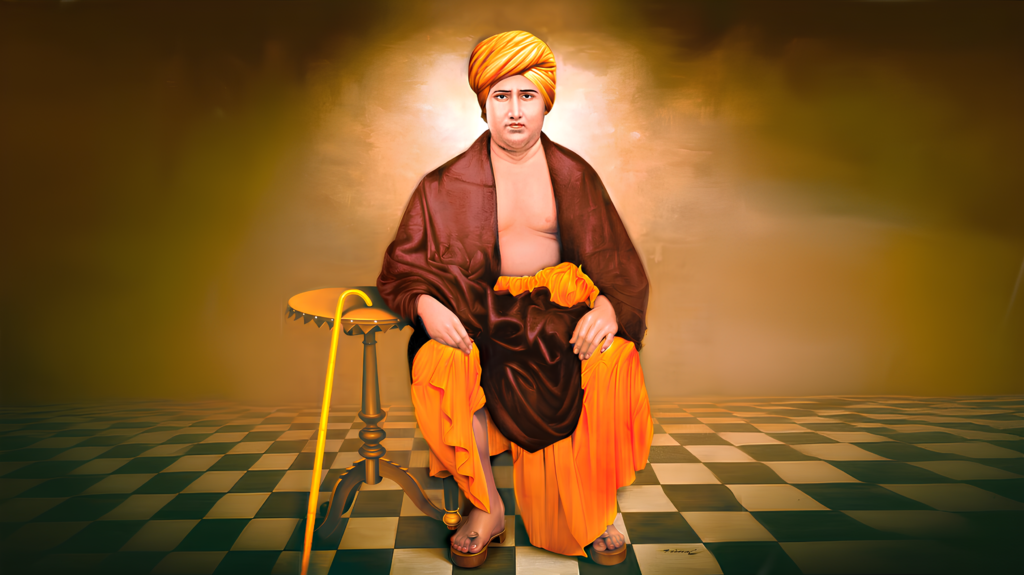What is Samkhya Philosophy? Exploring Ancient Wisdom and Modern Science

Namaste Shiksharthis! Ever wondered how ancient sages of India could grasp the mysteries of the universe without modern technology? The Samkhya philosophy, created thousands of years ago, holds insights into the nature of existence, comparable to today’s scientific discoveries. Let’s dive into this fascinating world where ancient wisdom meets modern curiosity.
Introduction to Samkhya Philosophy
Samkhya, one of the six classical schools of Indian philosophy, stands out as a deeply scientific and logical system of thought. Unlike many religious views that suggest the universe was created by a divine being, Samkhya offers an alternate explanation — one that is based on reason and observation.
This blog post explores the Samkhya philosophy, its key principles, and how it relates to modern scientific ideas. By the end of this post, you will understand why this ancient philosophy still holds relevance today.
The Origins of Samkhya Philosophy
Samkhya philosophy dates back to around 700 BCE and was first developed by the sage Kapila Muni. Kapila is credited as the founder of this philosophy, and his work has been highly respected by various religious traditions, including both theistic (believing in a god) and atheistic (denying the existence of a god) schools of thought.
Kapila’s philosophy was so influential that even Lord Krishna, in the Bhagavad Gita, referred to Kapila as one of the greatest sages. However, the original texts written by Kapila Muni have been lost over time. Thankfully, later philosophers like Ishwar Krishna (around 300 CE) revived and preserved much of Samkhya’s teachings through works like the Samkhya Karika.
What is Samkhya Philosophy?
Samkhya means “enumeration” or “counting,” and the philosophy itself is a systematic explanation of how the universe came into existence. Unlike religious philosophies that attribute creation to a god or divine force, Samkhya argues that the universe is a result of a natural process.
Samkhya is a dualistic philosophy, meaning it divides reality into two fundamental components:
- Purusha (Consciousness or the Self)
- Prakriti (Nature or Matter)
In this philosophy, Purusha is passive, an observer, while Prakriti is active and ever-changing. The interaction between these two leads to the creation of the universe.
If you want to learn Samkhya Darshan in detail, then you can enroll in our Sankhya Darshan Course.
Key Principles of Samkhya: Satkaryavada and Causality
At the core of Samkhya philosophy is the concept of Satkaryavada, or the theory of pre-existence. This principle argues that everything in the universe must come from something that already exists. Simply put, something cannot arise from nothing.
This is similar to the law of conservation of energy in modern science, which states that energy cannot be created or destroyed — it merely changes form. In the same way, Samkhya argues that the universe was not created out of nothing, but emerged from pre-existing material causes.
For example, a pot made from clay didn’t come from nowhere. The clay already existed, and the potter simply shaped it into a pot. In this analogy:
- The clay is the material cause (upadana karana).
- The potter is the instrumental cause (nimitta karana).
This analogy helps us understand how Samkhya sees the creation of the universe. There is no need for a divine creator — the universe exists because of the interaction of causes and effects that have always been there.
The Three Gunas: The Building Blocks of the Universe
According to Samkhya, everything in the universe, including nature, is composed of three qualities, or gunas:
- Sattva (balance, harmony, light)
- Rajas (activity, motion, energy)
- Tamas (inertia, darkness, rest)
These three gunas are present in everything we see, from living beings to inanimate objects. For example:
- Sattva represents clarity, knowledge, and light, like the shining stars in the sky.
- Rajas signifies movement and action, which we see in the constant expansion of the universe.
- Tamas is inertia or rest, like the stillness of a rock or the darkness of space.
The interaction of these three gunas gives rise to all creation. When they are in perfect balance, nature is at rest, but when the balance shifts, the universe takes form.
Samkhya’s Influence on Modern Thought
Samkhya’s principles have influenced many schools of thought, both ancient and modern. Even Buddhism was shaped by Samkhya’s ideas, as Siddhartha Gautama (Buddha) grew up in the city of Kapilavastu, named after Kapila Muni. Buddha’s teachings on suffering and the impermanence of life have echoes of Samkhya’s philosophical foundations.
In modern times, Samkhya’s idea of causality and the theory of gunas resonate with our understanding of energy, motion, and matter in physics. Just as scientists study the cause behind every effect, Samkhya philosophy encourages us to look deeper into the causes behind the universe’s creation.
Conclusion
Samkhya philosophy offers an ancient but deeply logical explanation of the universe. By recognizing that everything has a cause, Samkhya aligns closely with modern scientific thinking. Its dualistic framework of Purusha and Prakriti, combined with the three gunas, provides a rich and thoughtful approach to understanding the world around us.
Whether you are interested in spirituality or science, Samkhya’s teachings remain relevant, showing that the quest to understand existence is timeless.
So, next time you look up at the stars, remember: our ancestors, without telescopes or modern science, already had profound insights into the mysteries of the universe. They were seeking answers just as we are today.
If you want to learn what is Purush and Prakriti in Detail, then you can read this article.



Pingback: What does Purush and Prakriti Mean? - Shikshanam